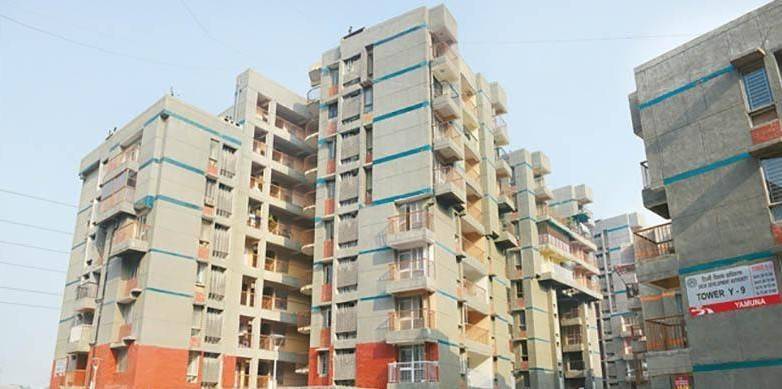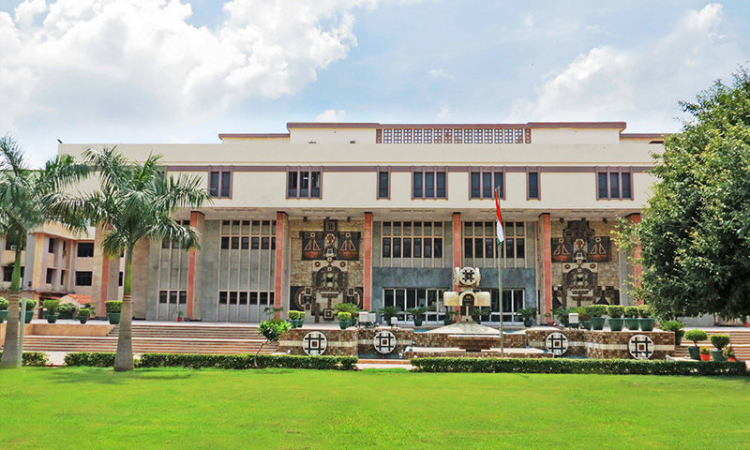In a major step toward improving old housing in Delhi, the government-industry task force has recommended the complete redevelopment of DDA colonies that are over 50 years old. If approved, the plan could lead to a major transformation of many areas built in the 1960s and 70s.
The task force, established in 2024 by Delhi’s Lieutenant Governor VK Saxena, includes representation from the Delhi State Industrial and Infrastructure Development Corporation (DSIIDC), the DDA, the Municipal Corporation of Delhi (MCD), and the Confederation of Indian Industry (CII). It presented its findings and recommendations earlier this week to Saxena and Delhi’s industries minister Manjinder Singh Sirsa.
According to the report titled “How to Revitalise Delhi: Report of the Task Force”, there are at least 30 DDA-built colonies spread across the capital that have crossed the 50-year threshold. These include neighbourhoods such as Safdarjung, Saket, East of Kailash, Masjid Moth, Friends Colony, Munirka, Kalkaji, Madangir, Katwaria Sarai, Shalimar Bagh, and Janakpuri, among others.
The panel's report flags structural safety as a pressing concern, noting that many of these buildings are nearing or have exceeded their intended design lives. Alongside structural risks, the report highlights the urgent need for densification and modern amenities in these areas, which were designed decades ago under vastly different urban planning norms.
The task force has advised the government to frame a legally enforceable policy to make redevelopment of these old structures mandatory. It has also proposed offering incentives such as increased Floor Area Ratio (FAR) and faster approval timelines for developers to make the projects more viable. While the recommendations are not binding, they are expected to shape upcoming policy decisions by the Delhi government.
As per historical data available on the DDA website, the agency initiated its housing activities in 1967. Prior to that, housing projects were managed by the Land and Building Department under the Delhi Administration. By 1969, 27 housing societies had been transferred to DDA, and an additional 99 were transferred in 1981, excluding one.
In addition to structural concerns, the report examines broader policy inefficiencies and economic disincentives. A notable recommendation is the reduction of circle rates for both residential and commercial properties. The report points out that Delhi’s circle rates are significantly higher than those in neighbouring cities like Gurugram and Noida—and even Mumbai in some segments—creating a deterrent for real estate investment.
Currently, premium residential areas in Delhi have circle rates as high as ₹7.74 lakh per square metre. This contrasts with a maximum of ₹5.5 lakh/sqm in Gurugram and ₹1.19 lakh/sqm in Noida. For commercial areas, Delhi’s rates range from ₹69,820 to ₹23.3 lakh/sqm, whereas Gurugram’s peak is ₹2.36 lakh/sqm and Noida’s is ₹1.19 lakh/sqm. Mumbai, often considered among the priciest real estate markets, has a maximum commercial circle rate of ₹2.71 lakh/sqm—still lower than Delhi's.
The panel has also recommended revitalising slum redevelopment through the Public-Private Partnership (PPP) model, with commercial development integrated into rehabilitation plans. This, it argues, would enhance financial viability and encourage private sector participation in urban renewal initiatives.
The report further outlines systemic changes such as creating a single-window clearance mechanism for large-scale projects, harmonising development control norms across agencies, and reducing amalgamation charges for commercial plots. It also proposes eliminating the need for revised layout approvals in MCD-administered areas and advocates for green building policies to support sustainable development.
Former DDA Additional Commissioner PS Uttarwar, who has been associated with several urban planning initiatives in Delhi, noted that while redevelopment of old DDA colonies is essential, several ancillary factors must be addressed to ensure successful implementation. He underscored the need for amendments to the DDA Act, stamp duty waivers, timely environmental clearances, and assured alternate accommodation for existing residents. He also pointed out that financial viability must be ensured through increased density allowances or mixed-use development.
Uttarwar also flagged the importance of strengthening civic infrastructure such as parking, drainage, sewerage, and water supply to support the proposed densification. He suggested that Transit-Oriented Development (TOD) models could be leveraged, especially in colonies near Delhi Metro corridors.
Industries Minister Manjinder Singh Sirsa acknowledged that some of the recommendations, especially those related to infrastructure and slum redevelopment, could significantly alter Delhi’s urban and industrial trajectory. He confirmed that the recommendations would be reviewed in detail before policy decisions are taken.
Although the final call lies with the Delhi government, the submission of this report marks a major step toward reimagining the city’s ageing housing infrastructure. As Delhi grapples with a shortage of low-income housing and rising population pressures, the redevelopment of old DDA colonies could provide much-needed relief—if supported by policy clarity, fiscal incentives, and robust planning.









.png)